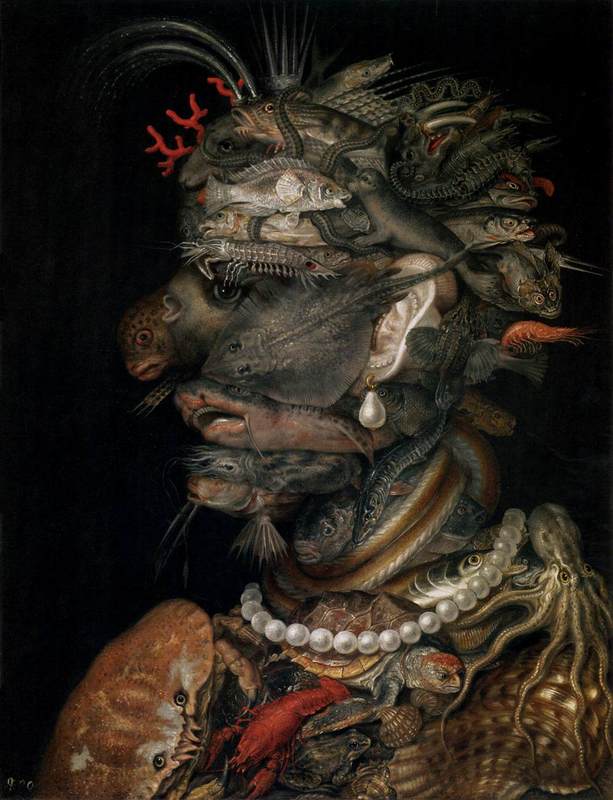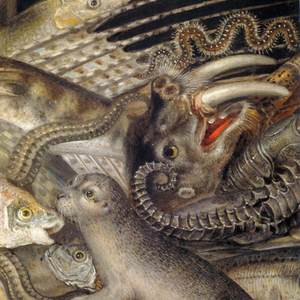Water

Giuseppe Arcimboldo, "Water," from Four Elements, 1566. Oil on wood, 67 x 51 cm, Kunsthistorisches Museum, Vienna. GG_1586
“Water" completes the Four Elements series, taking the form of a court lady composed entirely of aquatic animals and shells. Done in blues, greens, and greys with slight touches of red and orange that are striking against the cooler tones, it is somewhat cooler and darker in tone than the other Elements. “Water” is one of the more fantastical pieces in the series, as Arcimboldo gives little attention to the size relations between various animals similar to the technique he used in “Earth”. In the world of “Water”, a turtle is half the size of a crab and a sea horse and lobster fill approximately the same space. Here, potentially terrifying animals such as the shark that forms the woman’s mouth is far less frightening as it is hidden beneath a ray of equal size. Of an interesting note, it is only in “Water” that every animal and species depicted has been catalogued in great detail (note 1). Arcimboldo also makes use of the treasures of the sea, not just the animals that inhabit its waters. The lady’s neck is draped with a string of exquisite pearls, and another large one dangles from the mussel that implies an ear. Together with the coral that helps to form some of the spikes of her implied crown (note 2), they add another level of rarity and importance to a portrait that already incorporates a number of non-indigenous creatures and exotic animals. Of an interesting note, Arcimboldo chose to leave out many common animals that would have been easy to procure to properly study and then include in the composition. In doing so Arcimboldo adds another level of exclusivity to the painting, creating a unique and stunning work that shuns commonality in favor of creating a piece fit for an emperor.
Paired with "Winter" from Four Seasons, both paintings embody the cool and chill of the ocean and the winter months. Both employ the use of cool tones with blues and browns in order to convey the rawness of their subjects. However, they also use trace hints of brighter colors, such as red in the coral of "Water" and orange and yellow in the fruits of "Winter" that add brightness and hope to what would otherwise be two dark and eerie paintings.
Notes
note 1. There are a total of 62 species that have been identified in the painting, slightly less than those depicted. For the official listing and drawing of where each one lies within the image, see Kaufmann, Thomas D. "The Allegories and Their Meaning." The Arcimboldo Effect. New York: Abbeville, 1987. 96-97. Print.
note 2. In the Renaissance period, coral was believed to have special properties and could protect the wearer/owner from harm.
